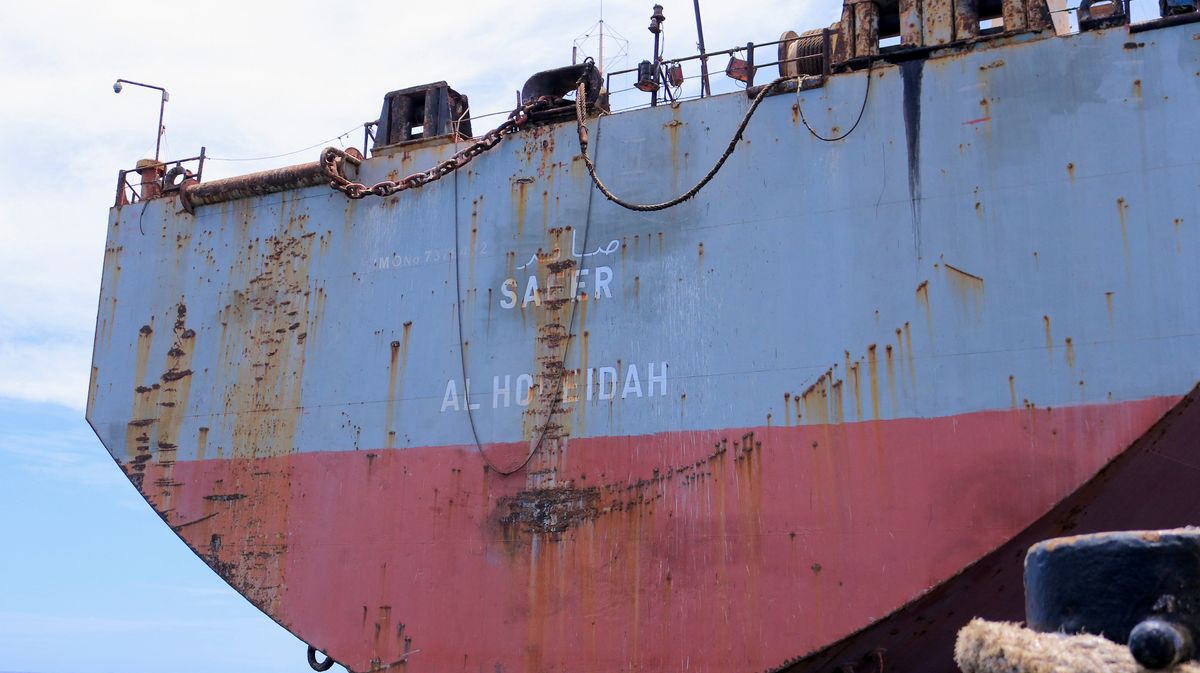Inside the UN’s efforts to stop an oil spill off the coast of Yemen
In 2015, an oil storage tanker called the FSO Safer anchored in the Red Sea off Yemen’s coast started deteriorating.

A few minutes every morning is all you need.
Stay up to date on the world's Headlines and Human Stories. It's fun, it's factual, it's fluff-free.
The backstory: In 2015, an oil storage tanker called the FSO Safer anchored in the Red Sea off Yemen’s coast started deteriorating after Houthi rebels seized parts of the country and the ship's maintenance operations were suspended. The problem is, this tanker holds 1.1 million barrels of crude oil. That’s four times the amount of oil spilled during the 1989 Exxon Valdez disaster in Alaska.
Because of its deterioration, the ship could explode or break apart at any time. This means that we could be looking at another oil spill catastrophe kind of soon. The UN says that if this happens, local coral reefs, mangroves and sea life will be devastated. It would also pollute the air and expose people to dangerous chemicals, plus it would disrupt shipping along the Suez Canal. Clean-up for this kind of spill would cost around US$20 billion.
More recently: The UN has been trying to raise money to take care of the Safer and the oil onboard for the past few years, which has taken a while. So far, it’s been able to secure US$114 million for the mission. The operation to salvage the tanker has already been delayed a few times. Part of the delay is because of the ongoing civil war in Yemen, which makes access to the Safer hard to come by. At one point, the ship was also held hostage because both sides of the war wanted the oil inside of it and the right to any money it might generate. And, the war led to delays in getting approval for the UN to intervene.
The development: This week, the UN will finally begin its mission to save the oil from the tanker. A crew arrived Tuesday to inspect the rusting ship, and the plan is for the UN to begin transferring the oil on board to a seaworthy tanker that it purchased this year. Preparing to transfer the oil could take between one and two weeks, and the transfer itself could take around three weeks. That timing all depends on what the inspection crew discovers, though.
The UN says that it still needs another US$29 million to safely moor its own oil tanker and to tow the Safer out of the sea and into a recycling yard. It’s still not clear who actually owns the oil, which is why the operation can’t be paid for by selling it.
Key comments:
“Moored off the Red Sea coast of Yemen, the FSO Safer is a rapidly decaying supertanker holding four times the amount of oil the Exxon Valdez spilled. It could break up or explode at any time, unleashing a humanitarian and ecological catastrophe centered on a country already decimated by years of war,” said a UN proposal explainer in April. “Such a spill would result in lasting environmental damage and profound economic costs across the region.”
“The consequences of not doing anything would be dire and devastating,” said Mohammed al-Hakimi, the head of Holm Akhdar, a Yemeni environmental consulting firm.
"Work at sea will start very soon. Additional funding is still important to finish the process," the UN posted on its Yemen Twitter account.




Comments ()